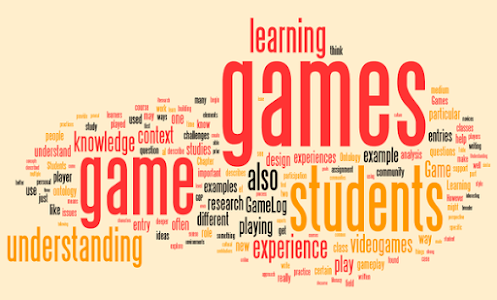What is a game anyway?
*Hi Guys*
Today I read a paper that was about what a game truly is and what is the actual definition of a game. The paper is by Ian Schreiber and in the paper he discusses the different terms and different opinions that challenge his opinion on what a game is, by the experts that create games as their opinions are more are centered more on how a game is built and what are the components of a game. These components consist of "rules, resources, actions and stories..." the author of the paper calls these components "formal elements".
He then goes on to discuss how different games can be distinguished. He uses the game Three to Fifteen as an example, because this game specifically can be called many different things, such as Magic Square, Tic-tac Toe or even Noughts and Crosses or various different games depending on where you live, so in summary it is important to define what a game is.
In the Critical Vocabulary section of the paper, he states why it is important to be critical of game and that it does not mean that he is pointing the flaws of the game but rather he is pointing the good and the bad of the game(analyzing). In the paper explains that vocabulary is important because it gives a better description of the game, as it would be hard to learn or communicate anything. one common way of describing a game to someone else is to use a comparison, but the flaw in that way of describing a game is that it means that the other has to have played the game that is being compared to the original game. The other flaw is that it does not cover that the case of the game can be very different .
An option that textbook writers use is to create terms and put these terms inside textbooks and could be used to communicate the basics of game design, but the flaw to this method is that after the course when talking to people who have not did the course, these terms are not substantial to them because they have not did the course, however the game industry is trying to settle on terms, the process is slow
Four basic Methods For generating ideas
Concentration:
Concentration is the most common method and the first method that comes to mind, when it comes to
generating ideas. There is techniques you can use to help generate them. It is said that changing your environment helps to think of different ideas, so taking unknown routes or going for walks at times that you usually walk at. It is also said that curious that like learning have a tendency to find it easier to come up with ideas.
Brainstorming:
This method is another common method in the gaming industry. There are three stages in the process and you need around 10-20 people in a location, you have to divide these people into two groups(participants and the commission}. The three stages are statement of task, generation of ideas and Grouping and selection.
Statement of task
In this stage it is predominantly the participants. They gather all the information on the resources such as the amount of money, the number of team members needed ,the specialization needed and the amount of time needed. From this information it gives an idea what type of game they can make.
Generation of ideas
In this stage the participants try to gather around all the ideas from the group, even the most delusional ideas are gathered. people are trying to gain more ideas from the ideas brought up and once all the ideas are collected they can move on to the third stage.
Grouping and Selection
The commissioner steps in the and final stage. It is important that group gathered ideas that were unique and diverse. Preferably they would like if the brainstorming team are members of the game development team. The commissioners pick and choose from the most suitable ideas they would like to move forward with.
Scamper:
This method is a good method if you do not really know or even enjoy the genre, it is really simple to apply and every letter in "scamper" is a technique by themselves.
Substitute
For this technique it means you look at a projected that is already been created and see if you can replaces something in it whether it be a character or a storyline or even the mechanics of the game .
Combine
This technique is about taking one or more game and deciding to combine or doing a cross between the two games of different genres
Adapt
In this technique you take the old mechanics and technology and see if you can update these to the current time
Modify
Modify requires that you take all the games and edit the aesthetics of the game more than the mechanics of the game.
Put
For this method you just apply the old mechanics and and find a modern or a new application for them.
Eliminate
This method the game designer is required to take out or exclude the old mechanics of the game.
Reverse
This is when the game designer tries to break the stereotypes in the game industry, by asking "what if we went the other direction"
Ramsey:
This method is the hardest one on the list to apply, however it it one that must be learned because as a game designer you might find yourself in the situation where you might have to apply this method.
For this method what you do is find a substantial amount of information on the given topic . The next thing you do is study what you have researched on the topic, trying to find hidden information and connotations and the way this works depends on the information given and the time spent studying the information




Hi Godwill I just read your blog on "Game Design and-What is a game anyway".I really like your explanation and the way you broken everything into paragraphs which makes it clear and understandable.I also like that you have a list of methods for generating game ideas.I also read the article by Ian Schreiber and I think it is a very good article which helped me to understand what a game actually is and how to come up with ideas. for a game.Nice post!
ReplyDelete